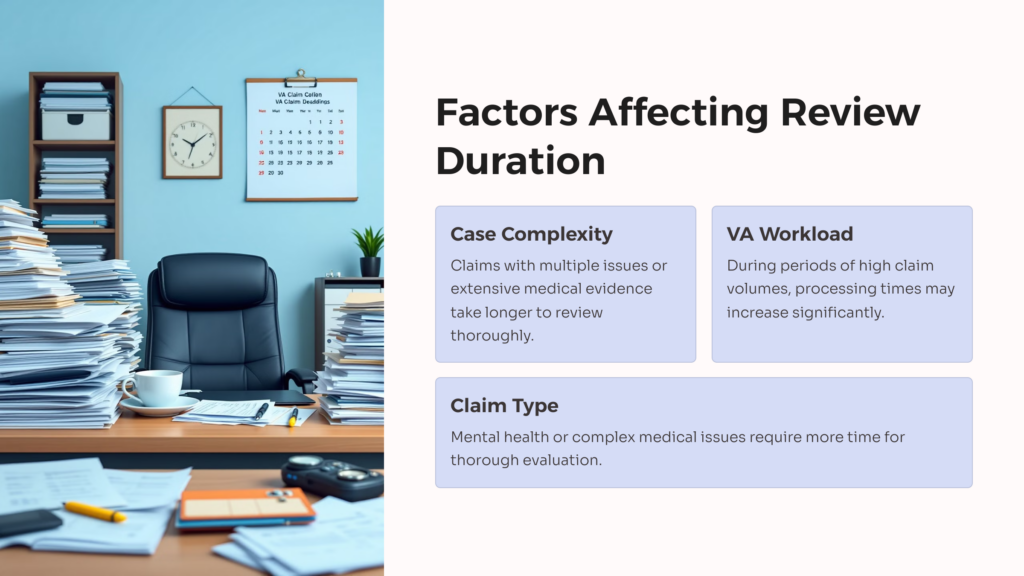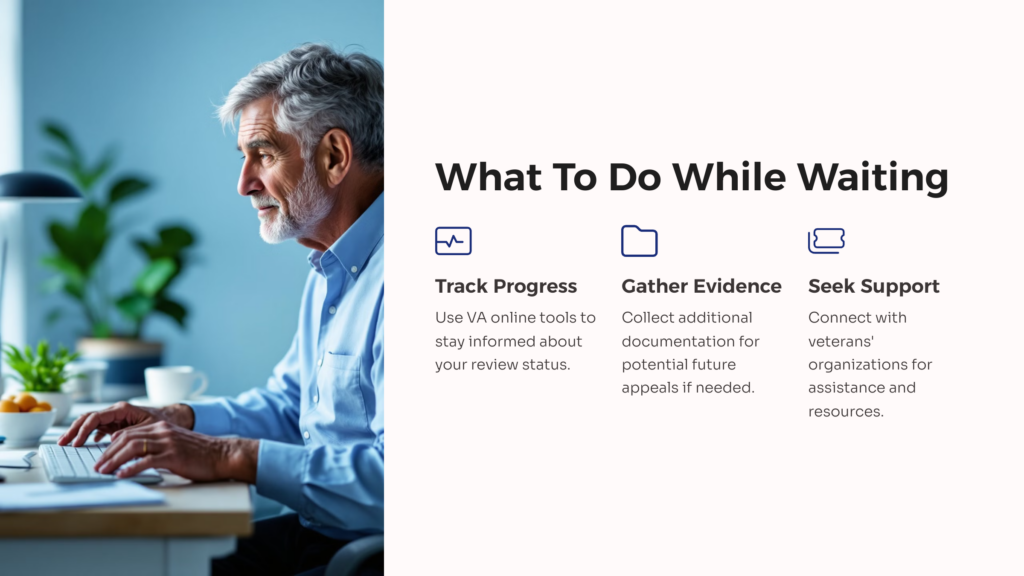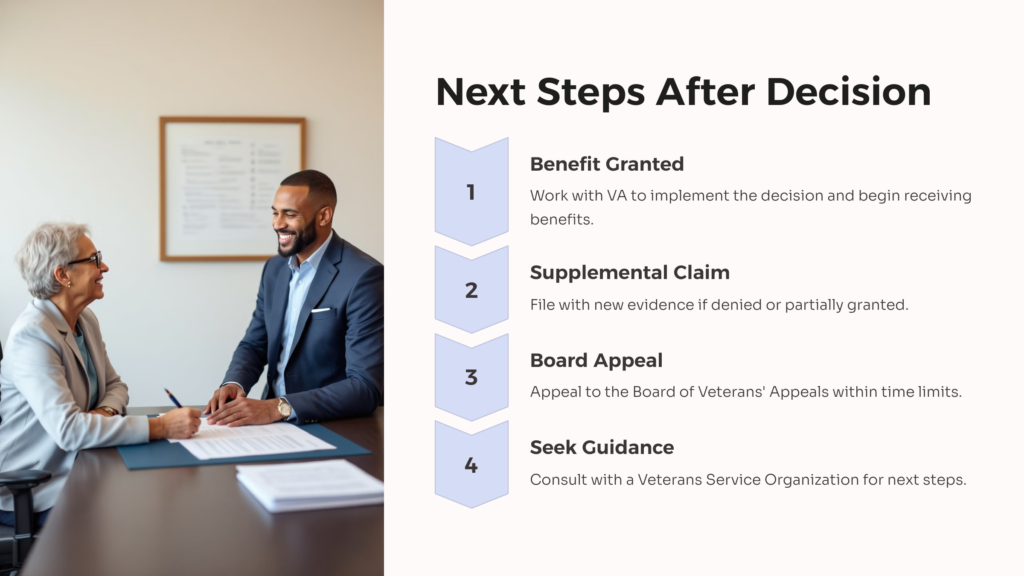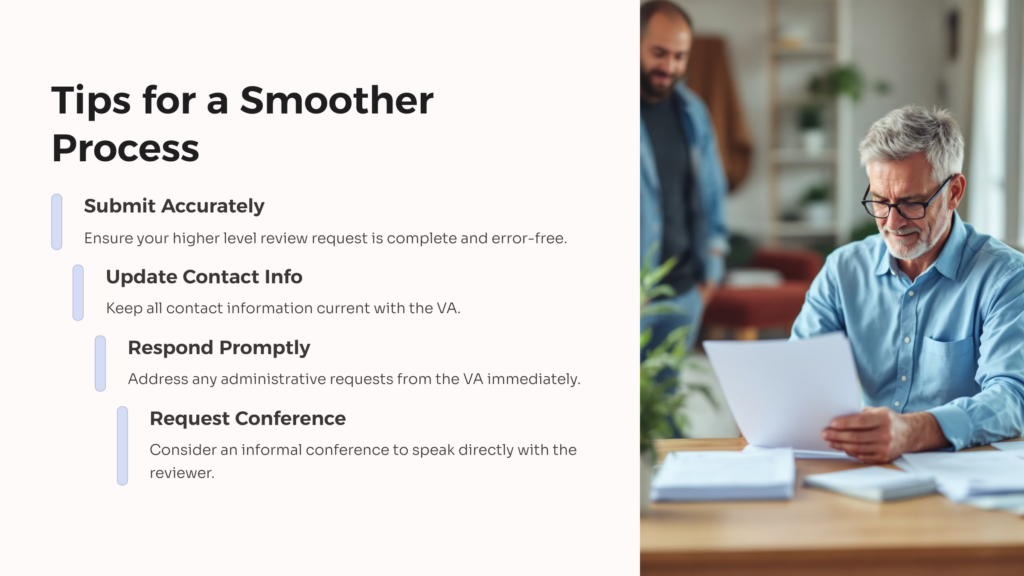When dealing with veterans’ benefits claims, a higher level review is an important option for those who disagree with an initial decision. This process allows veterans to have their case looked at again by a more senior claims adjudicator. But how long does a higher level review take? This is a common question among veterans seeking to appeal a decision.
The timeline for a higher level review can vary, but generally, it takes about 4-5 months from the date of request to receive a decision. However, it’s important to note that this is an average, and individual cases may take shorter or longer depending on various factors.
Understanding the process and timeline of a higher level review can help veterans manage their expectations and plan accordingly. Let’s dive deeper into the factors that influence the duration of this review process.
Factors Affecting the Duration of Higher Level Reviews

Several elements can impact how long a higher level review takes. One of the primary factors is the complexity of the case. Claims involving multiple issues or those requiring extensive medical evidence may take longer to review thoroughly.
The current workload of the Department of Veterans Affairs (VA) also plays a significant role. During periods of high claim volumes, processing times may increase. Additionally, if the review reveals that further evidence is needed, this can extend the timeline.
Another factor to consider is the type of claim being reviewed. Some claims, such as those related to mental health conditions or complex medical issues, may require more time for a thorough evaluation.
It’s also worth noting that the VA’s goal is to complete higher level reviews within 125 days. While they strive to meet this target, individual cases may vary.
The Higher Level Review Process
To better understand the timeline, it’s helpful to break down the higher level review process into steps. First, the veteran must submit a request for a higher level review within one year of the initial decision. This can be done online, by mail, or in person at a VA regional office.
Once the VA receives the request, they will assign the case to a senior reviewer. This reviewer will examine all the evidence that was in the file at the time of the original decision. It’s important to note that new evidence cannot be submitted during a higher level review.
The reviewer will then make a new decision based on this evidence. This decision could be to grant the benefit, deny the benefit, or return the case for further development if errors are found.
Throughout this process, veterans can check the status of their review online or by contacting the VA directly. While waiting can be frustrating, understanding each step can help set realistic expectations for the timeline.
Average Timelines for Higher Level Reviews
While the VA aims to complete higher level reviews within 125 days, actual timelines can vary. On average, veterans can expect to receive a decision within 4-5 months of submitting their request. However, some reviews may be completed more quickly, while others may take longer.
In fiscal year 2020, the VA reported an average completion time of 64 days for higher level reviews. This was a significant improvement from previous years, demonstrating the VA’s commitment to expediting the process.
It’s important to remember that these are averages, and individual experiences may differ. Some veterans report receiving decisions in as little as 30-60 days, while others may wait 6 months or more.
What to Do While Waiting for a Higher Level Review Decision

The waiting period for a higher level review decision can feel long, but there are productive steps veterans can take during this time. First and foremost, it’s crucial to stay informed about the status of your review. The VA provides online tools and resources for tracking the progress of your claim.
While waiting, veterans can gather any additional evidence that might be relevant to their case. Although this evidence can’t be submitted for the current higher level review, it could be useful if further appeals are necessary.
It’s also a good time to explore other benefit options or support services that may be available. Many veterans’ organizations offer assistance and resources that can be helpful during this period.
Lastly, maintaining open communication with your representative, if you have one, can ensure you’re prepared for any potential outcomes of the review.
Potential Outcomes of a Higher Level Review
As the higher level review process concludes, there are several possible outcomes. The reviewer may decide to grant the benefit in full, which is the best-case scenario for the veteran. Alternatively, they might grant the benefit partially or deny it entirely.
In some cases, the reviewer may find errors in the original decision and return the claim for further development. This is known as a “duty to assist” error, and it can extend the overall timeline as additional evidence is gathered.
Understanding these potential outcomes can help veterans prepare for what comes next, whether it’s receiving the granted benefit or considering further appeal options.
Next Steps After a Higher Level Review Decision

Once a decision is made, veterans have several options depending on the outcome. If the benefit is granted, the next step is to work with the VA to implement the decision and start receiving the benefit.
If the claim is denied or only partially granted, veterans can consider other appeal options. These include filing a supplemental claim with new evidence or appealing to the Board of Veterans’ Appeals.
It’s important to act quickly after receiving a decision, as there are time limits for filing further appeals. Seeking guidance from a Veterans Service Organization or a VA-accredited representative can be helpful in navigating these next steps.
Tips for Expediting the Higher Level Review Process

While the timeline for a VA higher level review is largely out of the veteran’s control, there are some steps that can help ensure the process moves as smoothly as possible. First, make sure to submit a complete and accurate request for a higher level review. Any errors or missing information in a board appeal can cause delays.
Keep all contact information up to date with the VA. If they need to reach you for any reason, outdated contact details can slow down the process.
Respond promptly to any requests from the VA. Even though new evidence can’t be submitted during a higher level review, there may be administrative requests that require your attention.
Consider opting for an informal conference as part of your higher level review. This allows you to speak directly with the reviewer and can sometimes lead to quicker resolutions.
How AllVeteran Can Help You
The VA higher level review process is an important option for veterans seeking a VA disability appeal. While the average timeline is about 4-5 months, individual experiences can vary widely. Understanding the factors that influence the duration, the steps involved in the process, and potential outcomes can help veterans navigate this period more effectively.
Remember, patience is key during this process. The VA is working to improve and expedite higher level reviews, but thorough evaluations take time. Stay informed, be proactive in your approach, and don’t hesitate to seek assistance if needed. With the right preparation and mindset, you can navigate the higher level review process successfully, regardless of how long it takes.
At Allveteran.com, we seek to help veterans connect with resources that may make all the difference. To find out your disability rating, take our free medical evidence screening today!
 AllVeteran.com Advisors
AllVeteran.com Advisors
With expertise spanning local, state, and federal benefit programs, our team is dedicated to guiding individuals towards the perfect program tailored to their unique circumstances.











